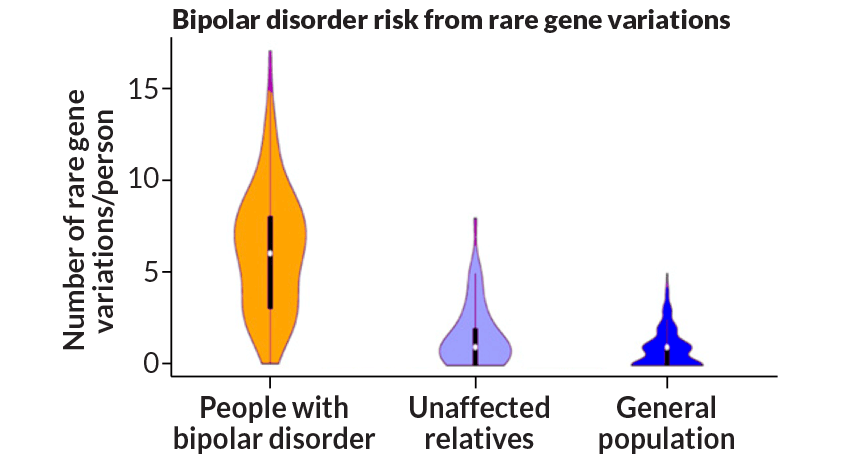Bipolar risk boosted by accumulation of rare versions of genes
Variants alter nerve cell activity, study suggests

RISING RISK People with bipolar disorder are more likely than others to have several rare versions of genes that control how much nerve cells fire. Width of the shapes in the graph indicate how many people in each group had a given number of rare gene types.
S.A. Ament et al/PNAS 2015






